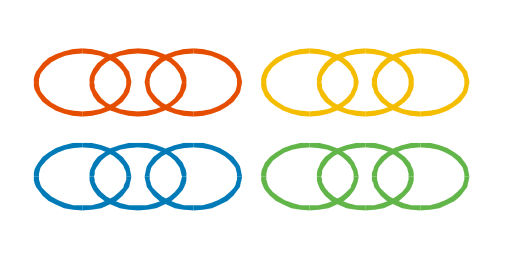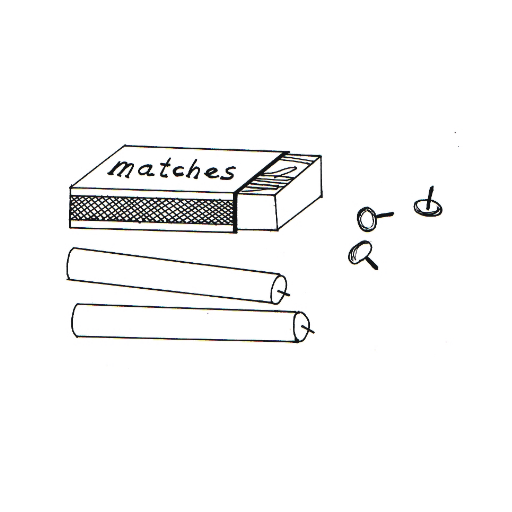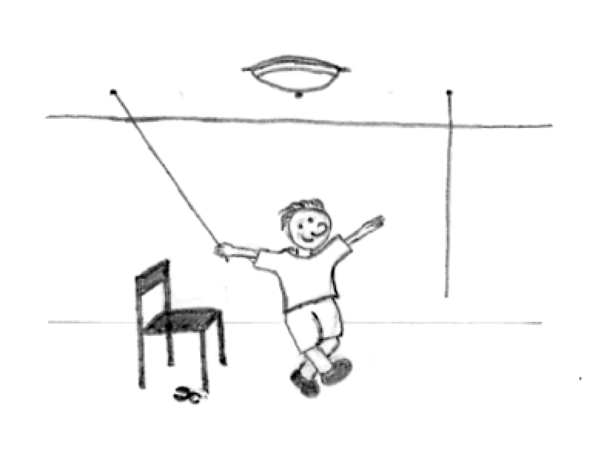12.1.2: Restructuring – The Gestalt Approach
- Last updated
- Save as PDF
- Page ID
- 92780
One dominant approach to Problem Solving originated from Gestalt psychologists in the 1920s. Their understanding of problem solving emphasises behaviour in situations requiring relatively novel means of attaining goals and suggests that problem solving involves a process called restructuring. Since this indicates a perceptual approach, two main questions have to be considered:
- How is a problem represented in a person's mind?
- How does solving this problem involve a reorganisation or restructuring of this representation?
This is what we are going to do in the following part of this section.
How is a problem represented in the mind?
In current research internal and external representations are distinguished: The first kind is regarded as the knowledge and structure of memory, while the latter type is defined as the knowledge and structure of the environment, such like physical objects or symbols whose information can be picked up and processed by the perceptual system autonomously. On the contrary the information in internal representations has to be retrieved by cognitive processes.
Generally speaking, problem representations are models of the situation as experienced by the agent. Representing a problem means to analyse it and split it into separate components:
- objects, predicates
- state space
- operators
- selection criteria
Therefore the efficiency of Problem Solving depends on the underlying representations in a person’s mind, which usually also involves personal aspects. Analysing the problem domain according to different dimensions, i.e., changing from one representation to another, results in arriving at a new understanding of a problem. This is basically what is described as restructuring. The following example illustrates this:
- Two boys of different age are playing badminton. The older one is a more skilled player, and therefore it is predictable for the outcome of usual matches who will be the winner. After some time and several defeats the younger boy finally loses interest in playing, and the older boy faces a problem, namely that he has no one to play with anymore.
- The usual options, according to M. Wertheimer (1945/82), at this point of the story range from 'offering candy' and 'playing another game' to 'not playing to full ability' and 'shaming the younger boy into playing'. All those strategies aim at making the younger stay.
- And this is what the older boy comes up with: He proposes that they should try to keep the bird in play as long as possible. Thus they change from a game of competition to one of cooperation. They'd start with easy shots and make them harder as their success increases, counting the number of consecutive hits. The proposal is happily accepted and the game is on again.
The key in this story is that the older boy restructured the problem and found out that he used an attitude towards the younger which made it difficult to keep him playing. With the new type of game the problem is solved: the older is not bored, the younger not frustrated.
Possibly, new representations can make a problem more difficult or much easier to solve. To the latter case insight– the sudden realisation of a problem’s solution – seems to be related.
Insight
There are two very different ways of approaching a goal-oriented situation. In one case an organism readily reproduces the response to the given problem from past experience. This is called reproductive thinking.
The second way requires something new and different to achieve the goal, prior learning is of little help here. Such productive thinking is (sometimes) argued to involve insight. Gestalt psychologists even state that insight problems are a separate category of problems in their own right.
Tasks that might involve insight usually have certain features – they require something new and non-obvious to be done and in most cases they are difficult enough to predict that the initial solution attempt will be unsuccessful. When you solve a problem of this kind you often have a so called "AHA-experience" – the solution pops up all of a sudden. At one time you do not have any ideas of the answer to the problem, you do not even feel to make any progress trying out different ideas, but in the next second the problem is solved.
For all those readers who would like to experience such an effect, here is an example for an Insight Problem: Knut is given four pieces of a chain; each made up of three links. The task is to link it all up to a closed loop and he has only 15 cents. To open a link costs 2, to close a link costs 3 cents. What should Knut do?

If you want to know the correct solution, click to enlarge the image.
To show that solving insight problems involves restructuring, psychologists created a number of problems that were more difficult to solve for participants provided with previous experiences, since it was harder for them to change the representation of the given situation (see Fixation). Sometimes given hints may lead to the insight required to solve the problem. And this is also true for involuntarily given ones. For instance it might help you to solve a memory game if someone accidentally drops a card on the floor and you look at the other side. Although such help is not obviously a hint, the effect does not differ from that of intended help.
For non-insight problems the opposite is the case. Solving arithmetical problems, for instance, requires schemas, through which one can get to the solution step by step.
Fixation
Sometimes, previous experience or familiarity can even make problem solving more difficult. This is the case whenever habitual directions get in the way of finding new directions – an effect called fixation.
Functional fixedness
Functional fixedness concerns the solution of object-use problems. The basic idea is that when the usual way of using an object is emphasised, it will be far more difficult for a person to use that object in a novel manner. An example for this effect is the candle problem: Imagine you are given a box of matches, some candles and tacks. On the wall of the room there is a cork-board. Your task is to fix the candle to the cork-board in such a way that no wax will drop on the floor when the candle is lit. – Got an idea?

- Explanation: The clue is just the following: when people are confronted with a problem and given certain objects to solve it, it is difficult for them to figure out that they could use them in a different (not so familiar or obvious) way. In this example the box has to be recognised as a support rather than as a container.
A further example is the two-string problem: Knut is left in a room with a chair and a pair of pliers given the task to bind two strings together that are hanging from the ceiling. The problem he faces is that he can never reach both strings at a time because they are just too far away from each other. What can Knut do?

- Solution: Knut has to recognise he can use the pliers in a novel function – as weight for a pendulum. He can bind them to one of the :strings, push it away, hold the other string and just wait for the first one moving towards him. If necessary, Knut can even climb on the chair, but he is not that small, we suppose . . .
Mental fixedness
Functional fixedness as involved in the examples above illustrates a mental set – a person’s tendency to respond to a given task in a manner based on past experience. Because Knut maps an object to a particular function he has difficulties to vary the way of use (pliers as pendulum's weight).
One approach to studying fixation was to study wrong-answer verbal insight problems. It was shown that people tend to give rather an incorrect answer when failing to solve a problem than to give no answer at all.
- A typical example: People are told that on a lake the area covered by water lilies doubles every 24 hours and that it takes 60 days to cover the whole lake. Then they are asked how many days it takes to cover half the lake. The typical response is '30 days' (whereas 59 days is correct).
These wrong solutions are due to an inaccurate interpretation, hence representation, of the problem. This can happen because of sloppiness (a quick shallow reading of the problem and/or weak monitoring of their efforts made to come to a solution). In this case error feedback should help people to reconsider the problem features, note the inadequacy of their first answer, and find the correct solution. If, however, people are truly fixated on their incorrect representation, being told the answer is wrong does not help. In a study made by P.I. Dallop and R.L. Dominowski in 1992 these two possibilities were contrasted. In approximately one third of the cases error feedback led to right answers, so only approximately one third of the wrong answers were due to inadequate monitoring.[1]
Another approach is the study of examples with and without a preceding analogous task. In cases such like the water-jug task analogous thinking indeed leads to a correct solution, but to take a different way might make the case much simpler:
- Imagine Knut again, this time he is given three jugs with different capacities and is asked to measure the required amount of water. :Of course he is not allowed to use anything despite the jugs and as much water as he likes. In the first case the sizes are: 127 litres, 21 litres and 3 litres while 100 litres are desired.
- In the second case Knut is asked to measure 18 litres from jugs of 39, 15 and three litres size.
In fact participants faced with the 100 litre task first choose a complicate way in order to solve the second one. Others on the contrary who did not know about that complex task solved the 18 litre case by just adding three litres to 15.

